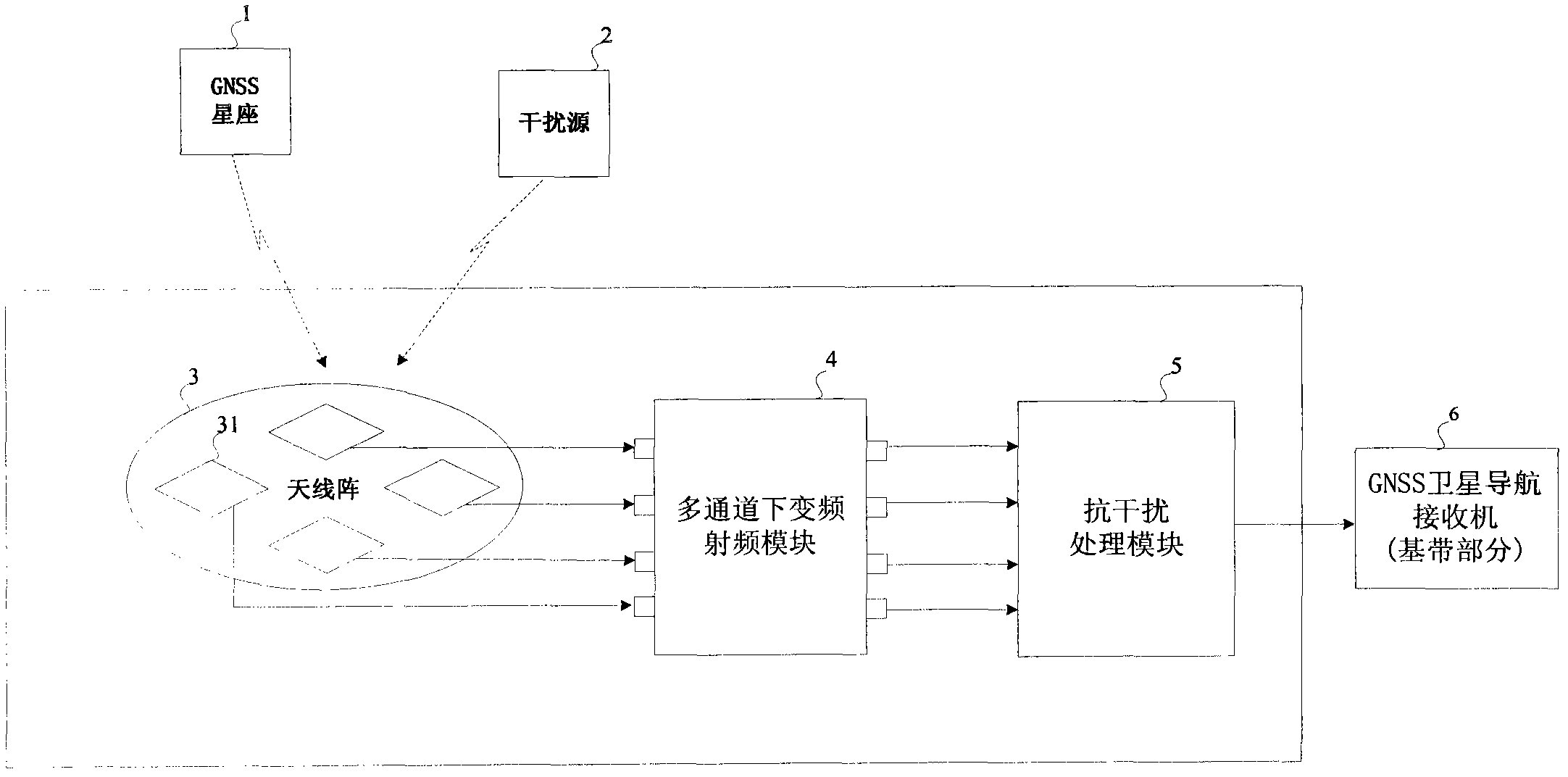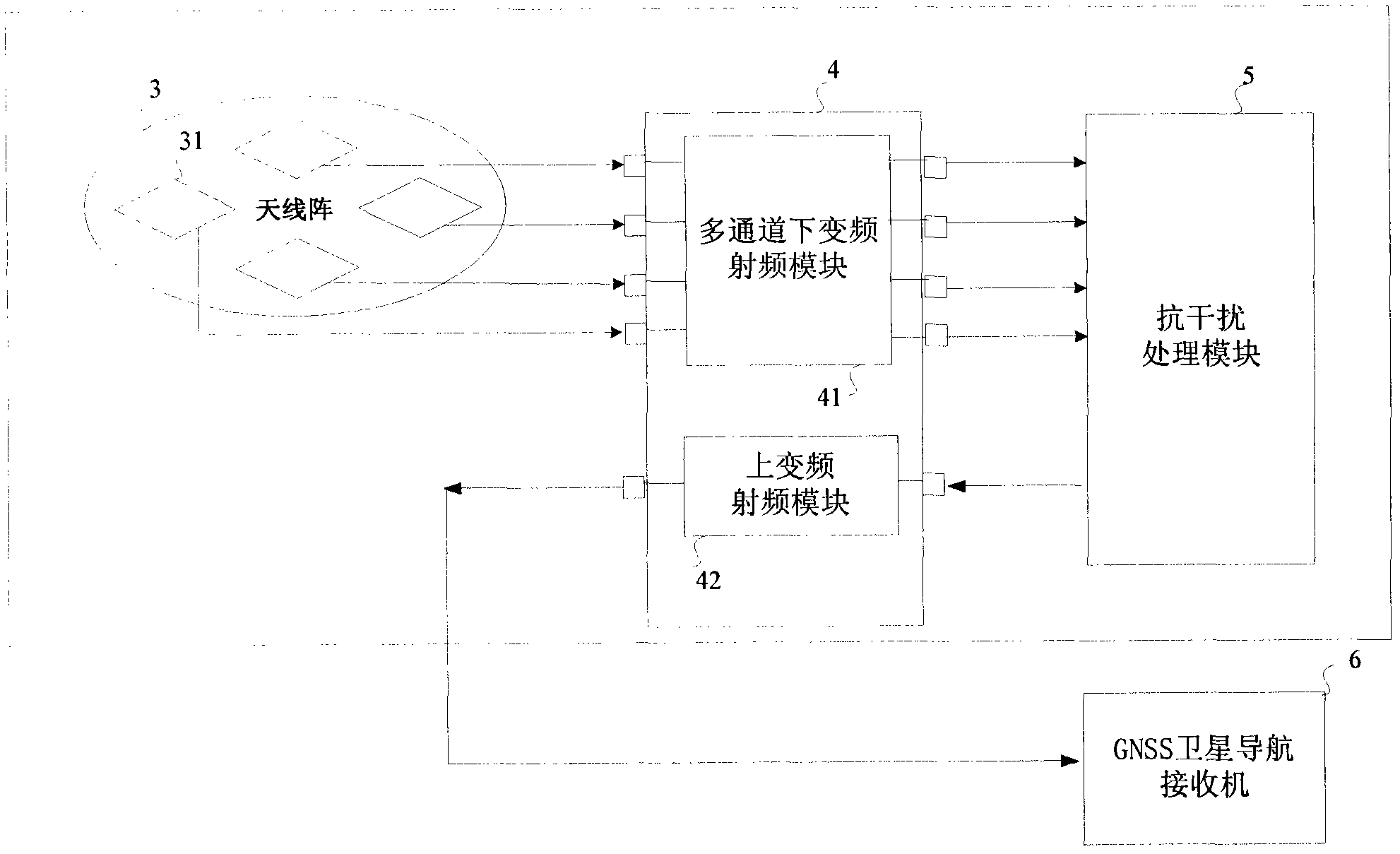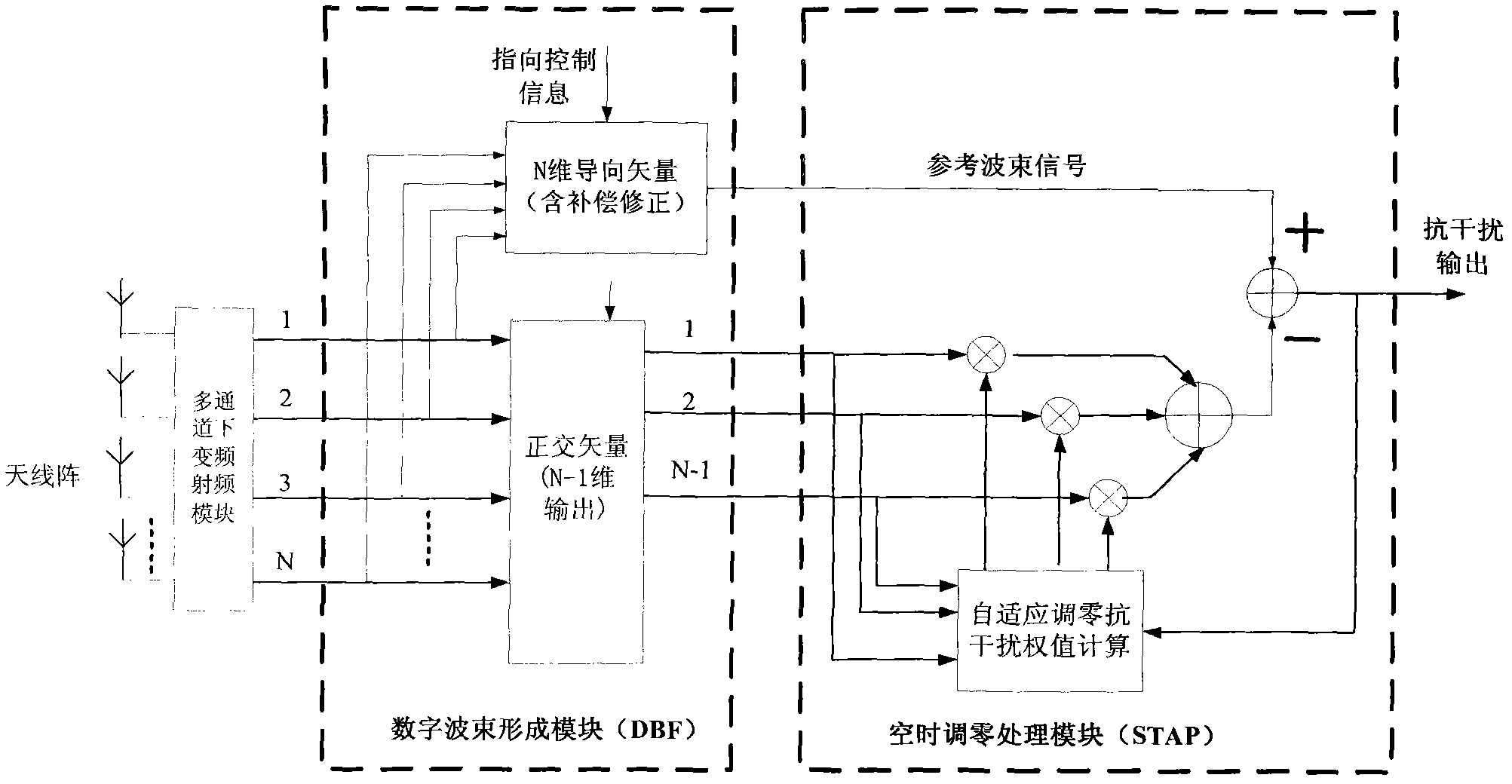Anti-interference system and method based on digital beam forming and space-time zeroing cascade
A technology of digital beam and zero adjustment, applied in the field of satellite navigation, can solve the problems of small amount of calculation, large amount of calculation, small beam width, etc., and achieve the effect of fast and agile
- Summary
- Abstract
- Description
- Claims
- Application Information
AI Technical Summary
Problems solved by technology
Method used
Image
Examples
Embodiment Construction
[0048] Embodiments of the present invention will be further described in detail below in conjunction with the accompanying drawings.
[0049] like figure 1 As shown, it is a structural schematic diagram of an embodiment of the anti-interference system of the present invention, including an antenna array 3 (note: the number of array elements 31 is variable, and it is a four-element array in the schematic diagram), a multi-channel down-conversion radio frequency module 4, and an anti-interference processing module 5 three main parts; the output of the anti-jamming system is connected with the baseband part 6 of the GNSS satellite navigation receiver. The multi-channel down-converting radio frequency module 4 is responsible for signal amplification and frequency conversion, converting the input GNSS carrier frequency signal to a low intermediate frequency for digital signal processing, and amplifying the signal to a level suitable for sampling; the output digital intermediate fre...
PUM
 Login to View More
Login to View More Abstract
Description
Claims
Application Information
 Login to View More
Login to View More - R&D
- Intellectual Property
- Life Sciences
- Materials
- Tech Scout
- Unparalleled Data Quality
- Higher Quality Content
- 60% Fewer Hallucinations
Browse by: Latest US Patents, China's latest patents, Technical Efficacy Thesaurus, Application Domain, Technology Topic, Popular Technical Reports.
© 2025 PatSnap. All rights reserved.Legal|Privacy policy|Modern Slavery Act Transparency Statement|Sitemap|About US| Contact US: help@patsnap.com



